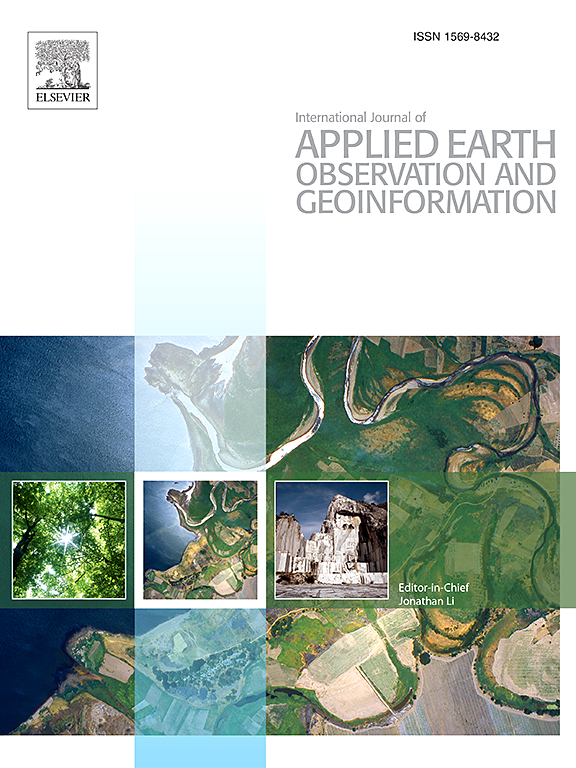Enhanced unsupervised domain adaptation with iterative pseudo-label refinement for inter-event oil spill segmentation in SAR images
IF 7.6
Q1 REMOTE SENSING
International journal of applied earth observation and geoinformation : ITC journal
Pub Date : 2025-03-20
DOI:10.1016/j.jag.2025.104479
引用次数: 0
Abstract
The imaging features of oil spills in synthetic aperture radar (SAR) images have significant differences due to factors such as marine environment, SAR sensors, oil film thickness and types, which makes it difficult to obtain a generalized model, and the limited number of SAR images obtained from new oil spill events hampers the effective training of deep learning networks. To solve these issues, an enhanced unsupervised domain adaptation with iterative pseudo-label refinement (EUDA-PLR) approach is proposed for inter-event oil spill SAR image segmentation. Specifically, the freely downloaded and collected Sentinel-1 and ERS-1/2 oil spill historical data are used as source domains, respectively, which are migrated to each new oil spill event with limited training samples based on adversarial training to improve the timeliness and accuracy of processing new oil spill events. Subsequently, the target domain is divided more rationally by combining the knowledge of the resolution and polarization mode of the satellite images, the wind speed information of the marine environment, and the computable oil-seawater power ratio. Finally, high-probability oil spill features are stored and updated based on top- marginal probabilities to improve the completeness of oil spill features in the pseudo-labeling of strong samples in the target domain, and adversarial training is utilized to enhance the ability to extract oil spill features from weak samples in the target domain. EUDA-PLR is applicable to a variety of current mainstream SAR satellites. In the experiments, the source domain data contains the Sentinel-1 dataset from 2014 to 2021 and the ERS-1/2 dataset from 1991 to 2002, and the target domain data contains the GF-3 dataset of an oil spill event in the Bohai Bay region in 2018, the GF-3 and COSMO-SkyMed dataset of an oil spill event in the South China Sea region in 2019, the GF-3 dataset for an oil spill event in the East China Sea region in 2020, and the Radarsat-2 dataset for an oil spill event in the Bohai Bay region in 2021. The proposed method has been shown to outperform existing algorithms in eight comparison experiments for four real oil spill events.
求助全文
约1分钟内获得全文
求助全文
来源期刊

International journal of applied earth observation and geoinformation : ITC journal
Global and Planetary Change, Management, Monitoring, Policy and Law, Earth-Surface Processes, Computers in Earth Sciences
CiteScore
12.00
自引率
0.00%
发文量
0
审稿时长
77 days
期刊介绍:
The International Journal of Applied Earth Observation and Geoinformation publishes original papers that utilize earth observation data for natural resource and environmental inventory and management. These data primarily originate from remote sensing platforms, including satellites and aircraft, supplemented by surface and subsurface measurements. Addressing natural resources such as forests, agricultural land, soils, and water, as well as environmental concerns like biodiversity, land degradation, and hazards, the journal explores conceptual and data-driven approaches. It covers geoinformation themes like capturing, databasing, visualization, interpretation, data quality, and spatial uncertainty.
 求助内容:
求助内容: 应助结果提醒方式:
应助结果提醒方式:


